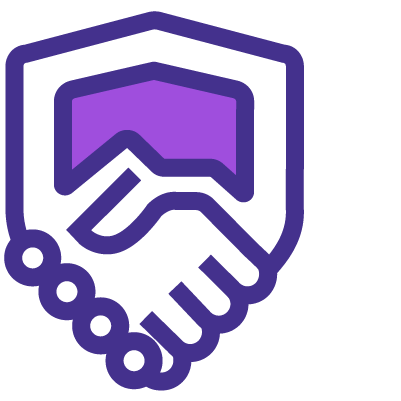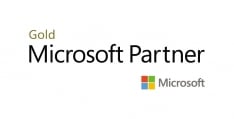Administering Microsoft Exchange Server 2016/2019 (M20345-1) Course Outline
Module 1: Deploying Exchange Server
- Overview of Exchange Server
- Exchange Server Architecture
- Requirements for Exchange Server
- Deploying Exchange Server Exchange Server
- Exchange Server Management Tools
Lab: Deploying Exchange Server
- Evaluating Requirements and Prerequisites for an Exchange Server 2019 Installation
- Deploying Exchange Server 2019
- Verifying Exchange Server Functionality
Module 2: Managing Exchange Server 2016 Storage
- Exchange Server Mailbox Databases
- Exchange Server Storage
- Configuring Exchange Server Mailbox Databases and Storage
Lab: Configuring Exchange Server Storage
- Creating and Configuring Mailbox Databases
Module 3: Managing Recipient Objects
- Managing User Mailboxes
- Managing Other Types of Mailboxes
- Managing Other Recipients Objects
- Configuring Policies and Adress Lists
Lab: Managing Recipient Objects
- Configuring Recipient Objects
- Managing Public Folder Mailboxes
Lab: Configuring Address Lists and Policies
- Managing Email Address Policies
- Managing Address Lists and Address Book Policies
Module 4: Managing Recipients and Exchange Servers by using Exchange Server cmdlets
- Overview of the Exchange Management Shell
- Managing Exchange Servers by using Exchange Management Shell cmdlets
- Managing Exchange Servers by using Scripts
Lab: Managing Exchange Server and recipient objects by using Exchange Management Shell
- Using Exchange Management Shell to Manage Recipients
- Using Exchange Management Shell to Manage Exchange Server
Module 5: Implementing Client Connectivity
- Configuring Client Access Services
- Managing Client Access Services
- Client Connectivity in Exchange Server
- Configuring Outlook on the Web
- Configuring Mobile Messaging
Lab: Configuring Client Access Services
- Configuring Namespaces for Client Access
- Configuring Certificates for Client Access
- Configuring Custom MailTips
Lab: Deploying and Configuring Client Access Services on Exchange Server
- Configuring Exchange Server for Outlook
- Configuring Outlook on the web
- Configuring Microsoft Exchange ActiveSync
Module 6: Managing High Availability in Exchange Server
- High Availability on Exchange Server
- Configuring Highly Available Mailbox Databases
- Configuring High Availability of Client Access Services
Lab: Implementing DAGs
- Creating and Configuring a DAG
Lab: Implementing and Testing High Availability
- Deploying a High Availability Solution for Client Access Services
- Testing the High Availability Configuration
Module 7: Implementing Disaster Recovery for Exchange Server
- Implementing Exchange Server Backup
- Implementing Exchange Server Recovery
Lab: Backing up Exchange Server Data
- Backing up an Exchange Server Mailbox Database
Lab: Restoring Exchange Server Data
- Restoring Exchange Server Mailbox
- Restoring a Database Availability Group (DAG) Member (optional)
Module 8: Configuring and Managing Message Transport
- Overview of Message Transport
- Configuring Message Transport
- Managing Transport Rules
Lab: Configuring and Managing Message Transport
- Configuring Message Transport
- Monitoring and Verifying Message Delivery
- Configuring a Disclaimer Transport Rule
- Configuring a DLP Policy for Financial Data
Module 9: Configuring Message Security
- Deploying and Managing an Edge Transport Server for Message Security
- Implementing an Antivirus Solution for Exchange Server
- Implementing an Antispam Solution for Exchange Server
Lab: Configuring Message Security in Exchange Server
- Configuring and Testing EdgeSync
- Configuring Antivirus, Antispam and Malware Protection Features
Module 10: Monitoring and Troubleshooting Exchange Server
- Monitoring Exchange Server
- Troubleshooting Exchange Server
Lab: Monitoring and Troubleshooting Exchange Server
- Monitoring Exchange Server
- Troubleshooting Database Availability
- Troubleshooting Client Access Servers
Module 11: Securing and Maintaining Exchange Server
- Securing Exchange Server by using RBAC
- Configuring Audit Logging in Exchange Server
- Maintaining Exchange Server
Lab: Securing and Maintaining Exchange Server
- Configuring Exchange Server Permissions
- Configuring Audit Logging
- Maintaining Exchange Server
Module 12: Implementing and Managing Exchange Online Deployments
- Overview of Exchange Online and Office 365
- Managing Exchange Online
- Implementing the Migration to Exchange Online
- Managing a Hybrid Environment
Lab: Managing Exchange Online
 To help and support our clients we are providing a limited number of 250 daily discount codes. Hurry, first come, first served!
To help and support our clients we are providing a limited number of 250 daily discount codes. Hurry, first come, first served!












 Halloween sale! Upto 40% off - 95 Vouchers Left
Halloween sale! Upto 40% off - 95 Vouchers Left















 If you wish to make any changes to your course, please
If you wish to make any changes to your course, please


